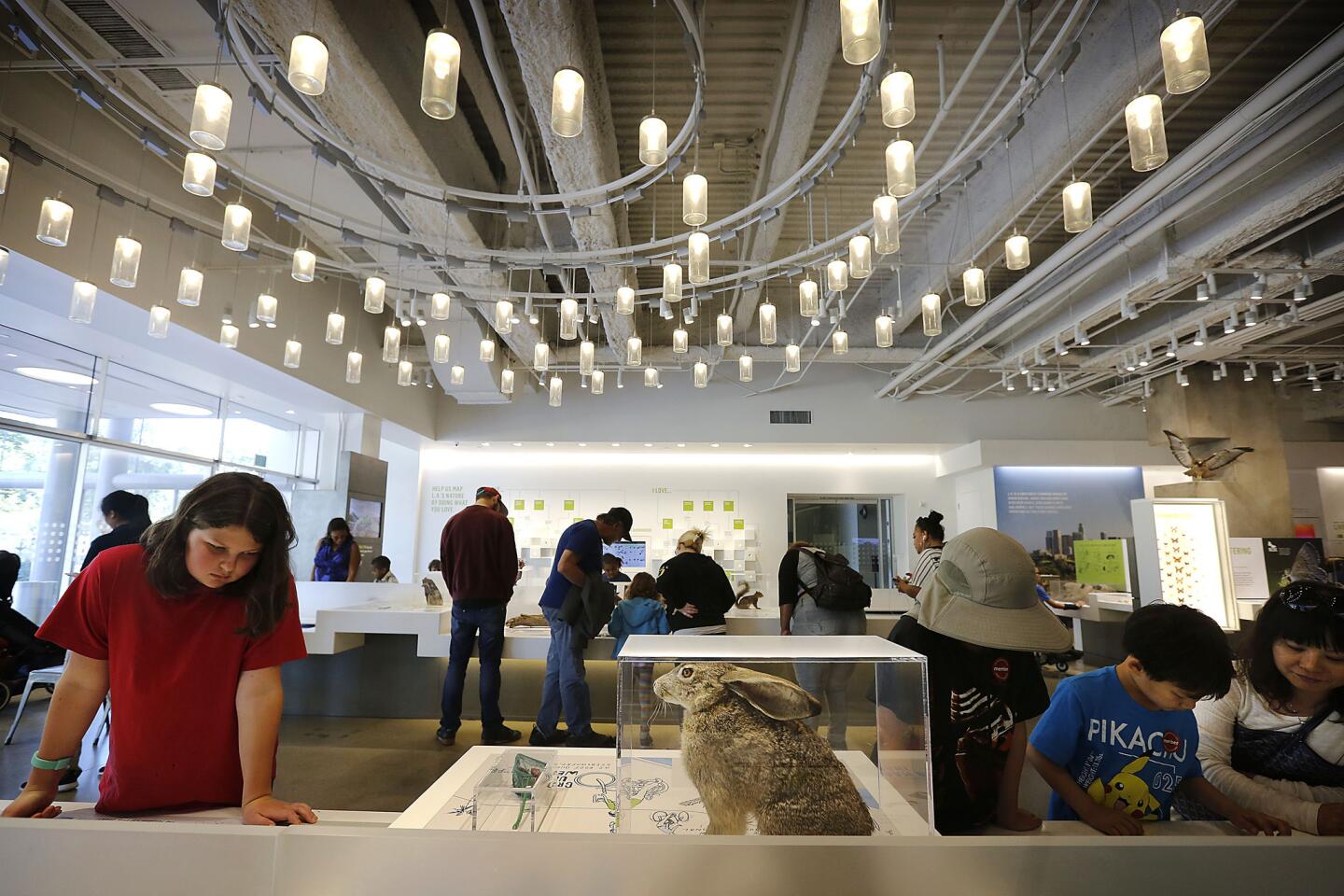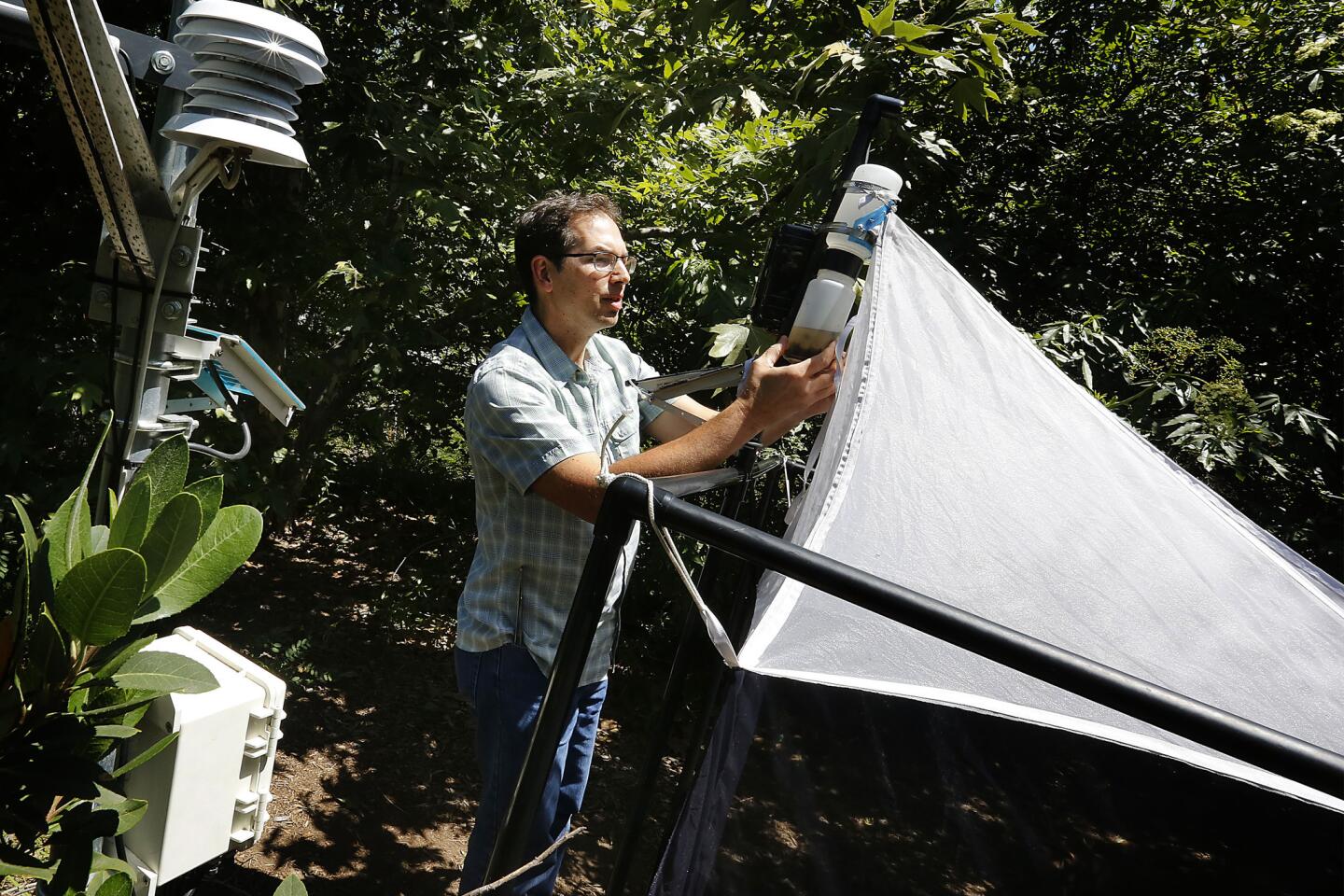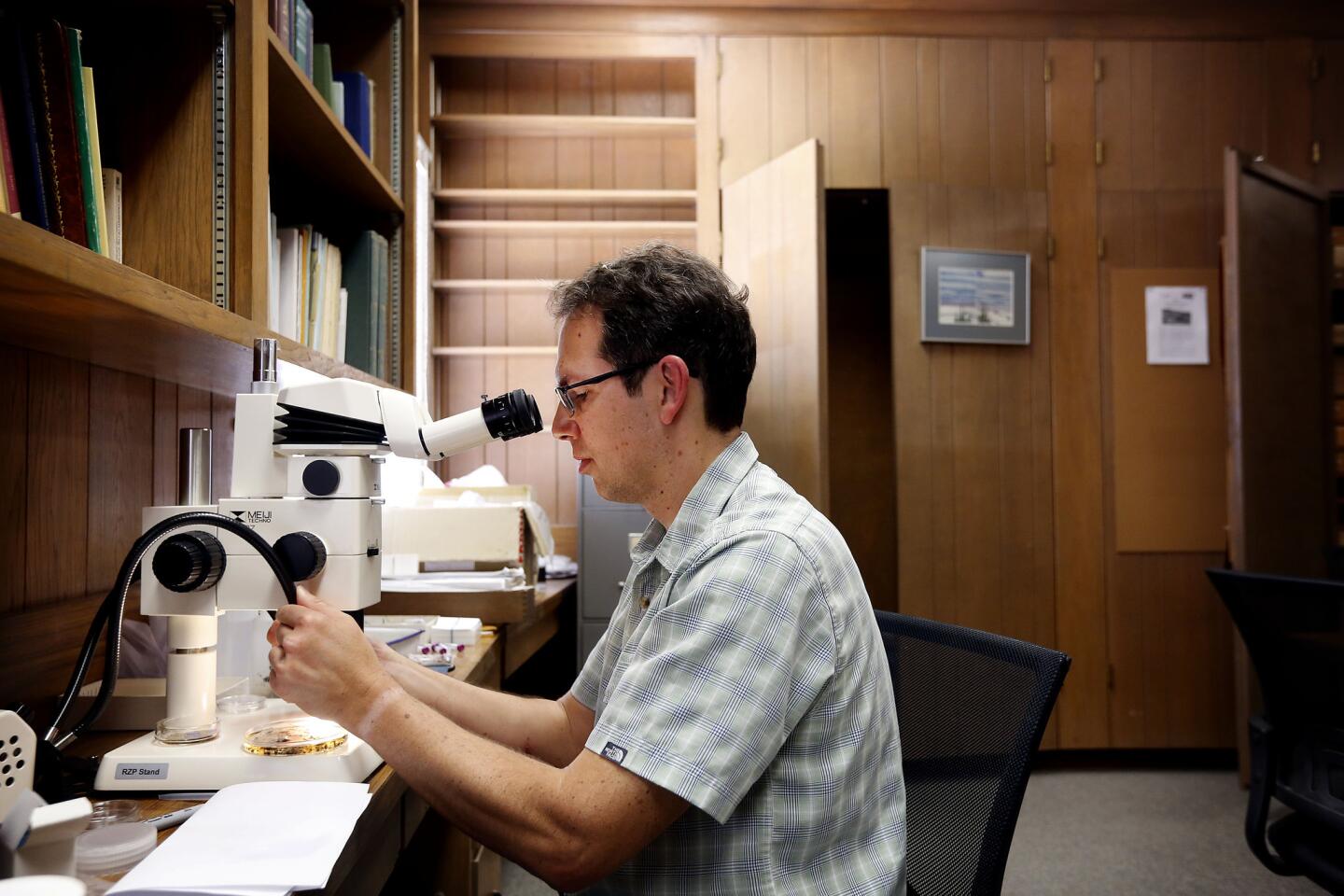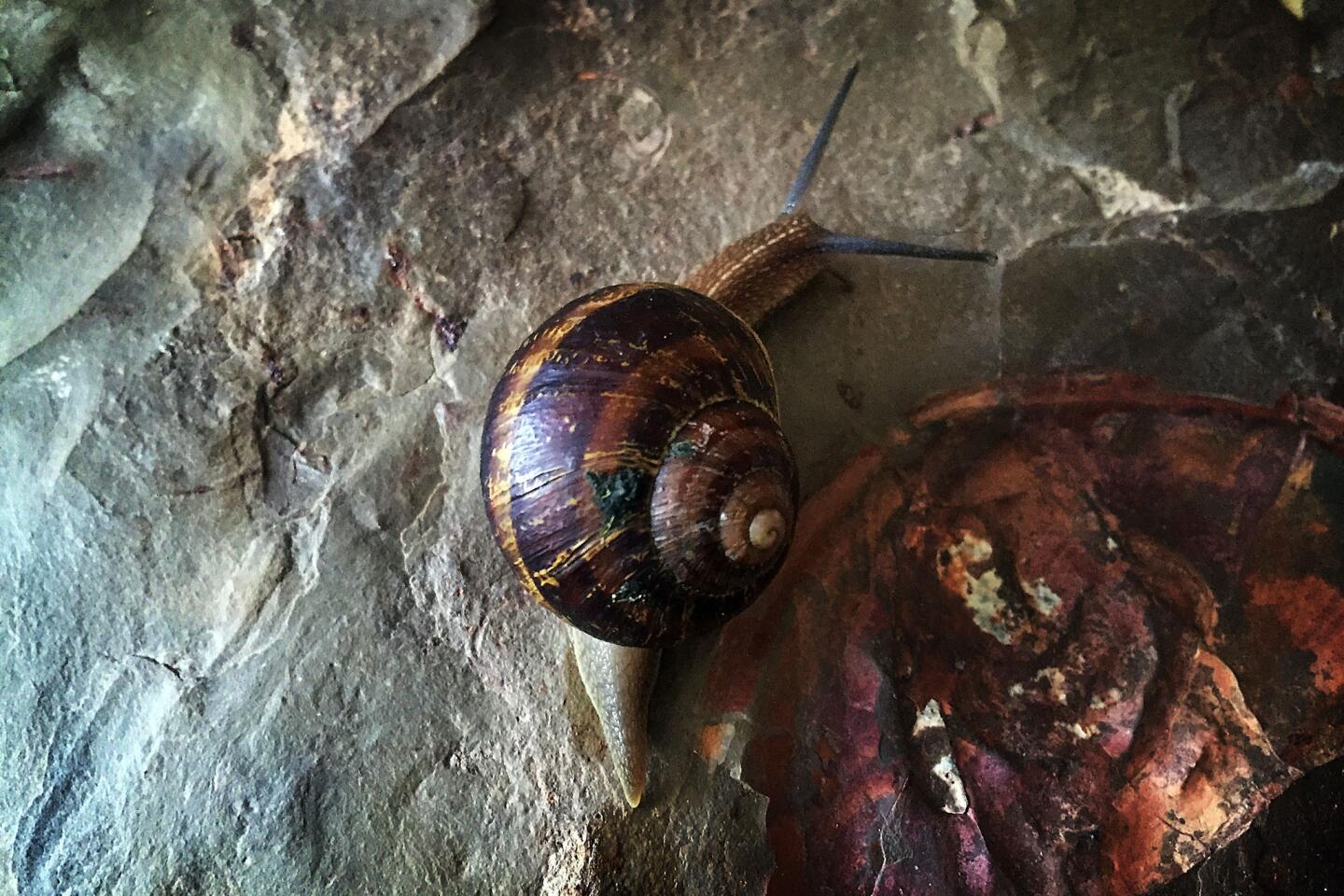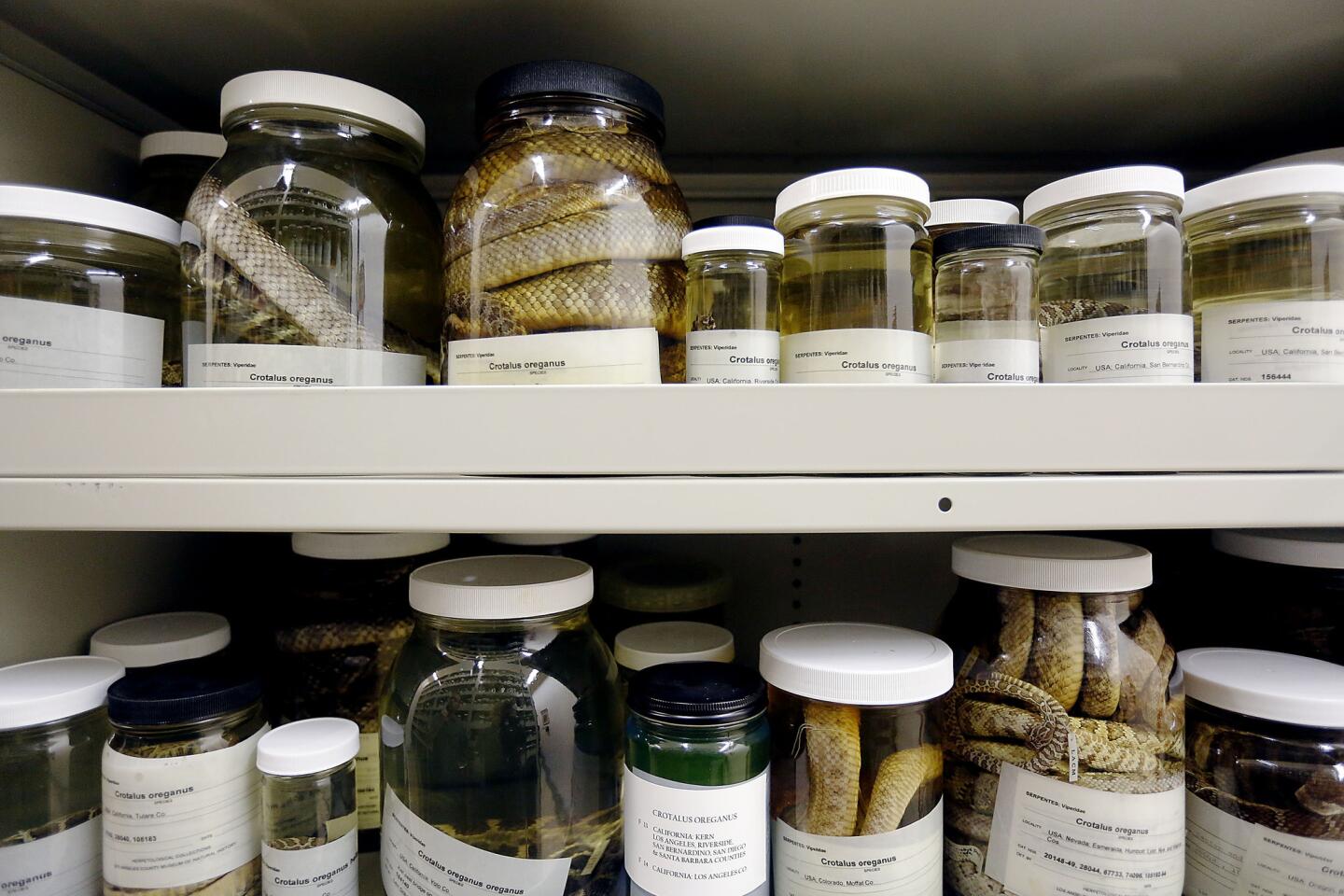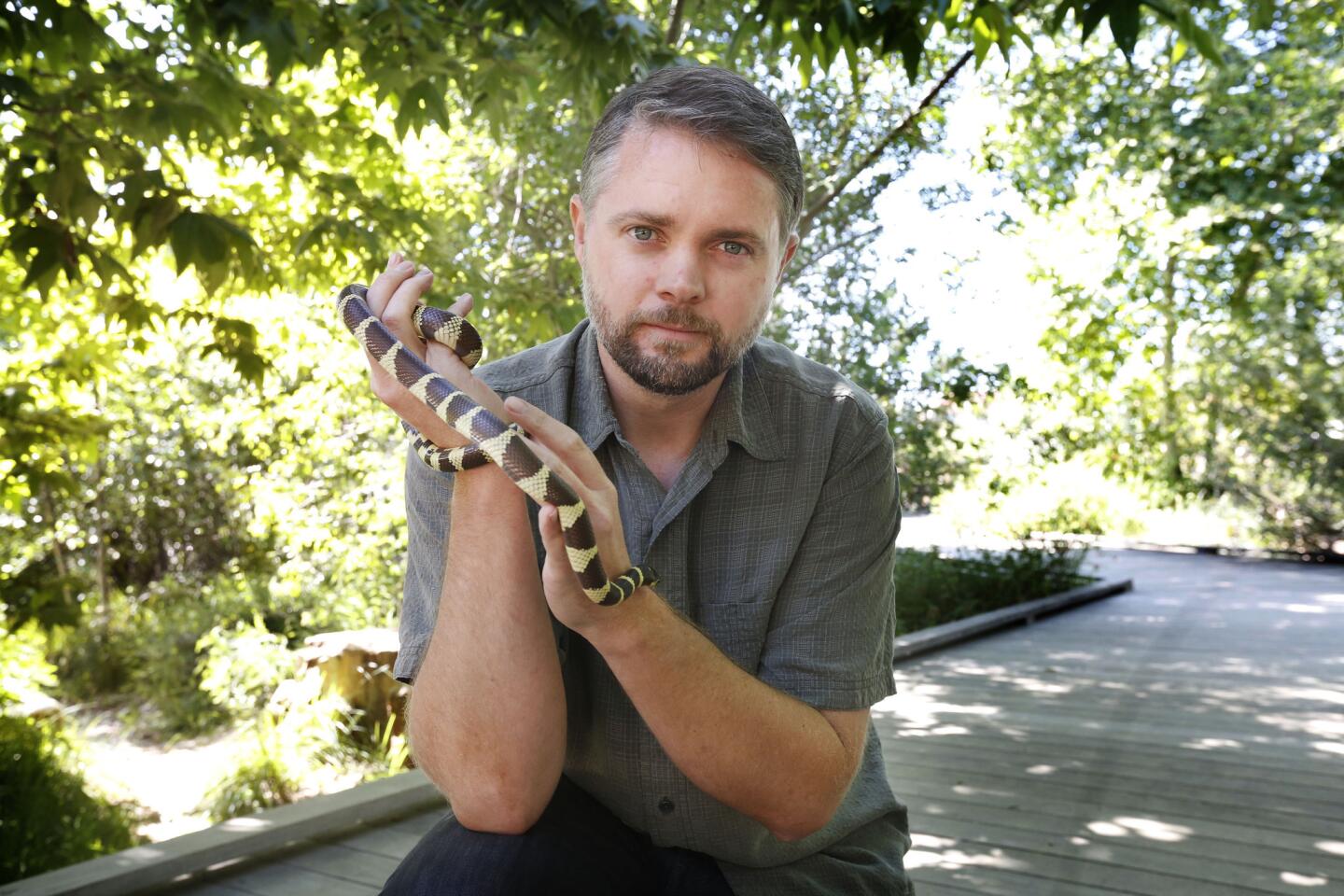Natural History Museum in L.A. enlists residents to collect data on urban wildlife
- Share via
The Natural History Museum of Los Angeles County is embarking on a pioneering plan to collect and inventory all of the urban wildlife in the region.
The effort will be led by hundreds of “citizen scientists” trained to collect data for the museum. Curatorial staff will catalog the findings, which the museum expects will shed light on the distribution and movements of wildlife and the relationships between often voracious interloper species and native critters that have had no time, biologically speaking, to evolve evasive behaviors.
Enlisting Angelenos to record the spiders, snakes, mammals, snails and slugs living in backyards, parks, concrete channels and so on is part of a strategy to make natural history and conservation more relevant to visitors to the 103-year-old museum.
Lori Bettison-Varga, president and director of the museum, calls it “a new approach to science — using the expansive and diverse Los Angeles landscape as a field site to look at things in a less compartmentalized way, and it is performed in — and with the help of — the public.”
“The databases generated by this work will help policymakers and land-use planners make informed decisions,” Bettison-Varga said.
The effort will be managed by the museum’s new Urban Nature Research Center, which opens Thursday with a staff of 12 and aspirations of becoming a hub for investigations of urban ecology.
“There’s a misconception that Los Angeles is a concrete jungle,” said Brian Brown, the museum’s curator of entomology. “In reality, the city is home to one of the most diverse ecosystems in the world.”
Museum scientists discovered 43 new fly species in Los Angeles just within the last year.
Some of the highest densities of lizards in the region are found in portions of Orange County, where nonnative anoles and geckos have established thriving populations among the palm trees and rose gardens of ranch-style homes.
The soil under Los Angeles’ lawns are terrifically hospitable to a small, brown and cryptic reptile no bigger than an earthworm. The Brahminy blind snake was first documented in Southern California in 2000 and it is believed to be one of the most wide-ranging terrestrial snake species in the world.
A year ago, a citizen scientist found a common chrysalis snail on a sidewalk at UCLA. It was the first discovery in California of that species, which is about the size of a pencil eraser and hails from Europe.
The center plans to monitor a turf war between two squirrel species: the western gray squirrel, which is disappearing from its historic range because of urban sprawl and strong competition from the more adaptable eastern fox squirrel, which was introduced to the region in the early 1900s.
Luis Chiappe, vice president of research and collections, said the museum is taking a “more pragmatic view of biodiversity in 21st century Los Angeles ... by focusing on living nature in local communities as opposed to distant pristine environmentalism.”
“The bottom line: We’re closing the gap between urban and wild,” Chiappe said.
Twitter: @LouisSahagun
------------
FOR THE RECORD
April 14, 2:57 p.m.: An earlier version of this article misspelled Luis Chiappe’s last name as Chappe.
